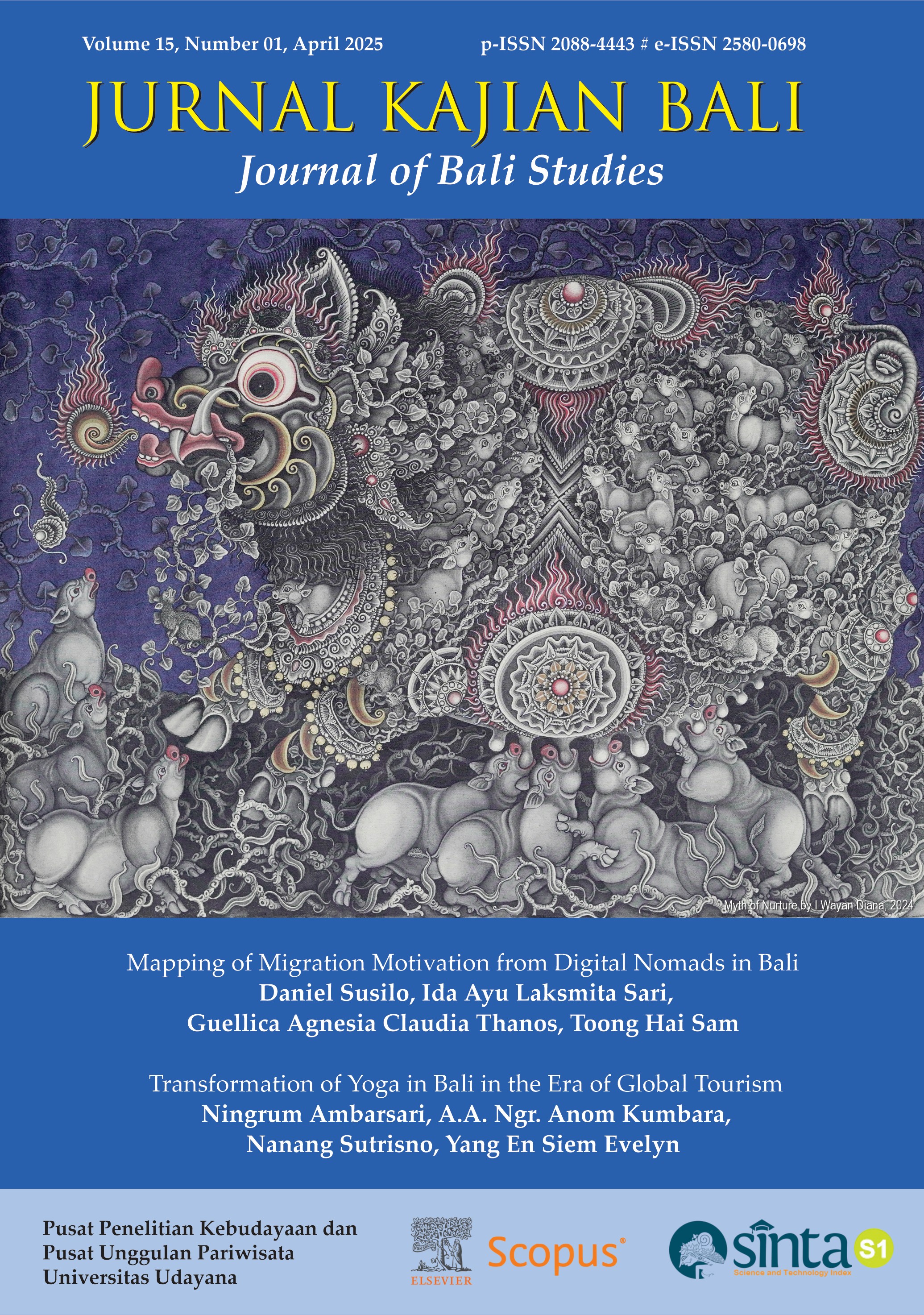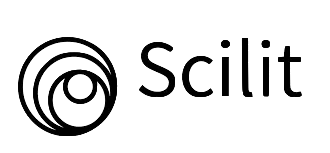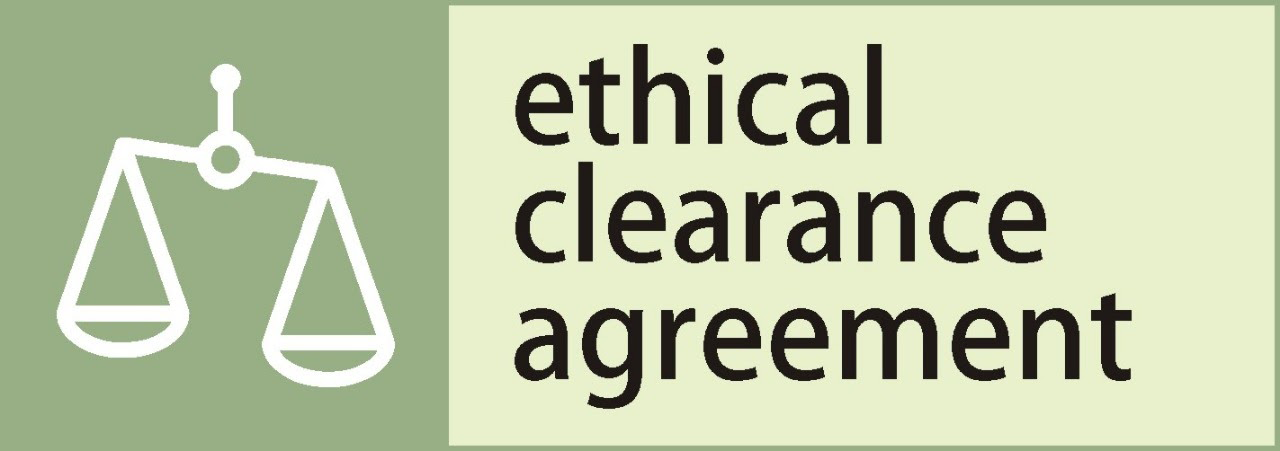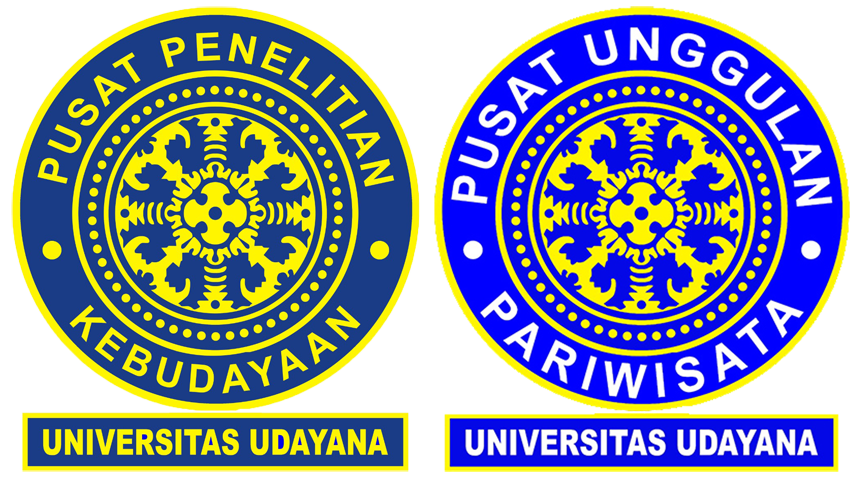Linguistic Complexity of Bali’s Tourism Actors: The Perspectives of Translanguaging and Language Ideologies
Abstract
It is widely known that international tourist destinations, such as Bali, serve as sites where multiple languages co-exist. This linguistic diversity has shaped how local people (speakers) use language in their interactions. However, research on language, in Bali’s tourism context, has treated languages as separate entities. Therefore, this study explored Balinese tourism actors’ experiences and perspectives of their language practice in relation to language ideologies. This study is qualitative in nature, adopting semi-structured interviews with Balinese tourism actors for data collection. The collected data were analyzed using thematic analysis. This study identified two key findings: (1) translanguaging as an economic and cultural bridge; and (2) translanguaging as a sign of openness. The findings suggest that multilingualism serves as a resource for meaning making, which contradicts the monolingual perspective that sees languages as separate. This study concludes with implications and recommendations for future research.
Downloads
References
Alifa, A. R., & Degaf, A. (2024). Multilingual communication in k-pop: a translanguaging exploration of wayv’S Youtube content. Language Literacy: Journal of Linguistics, Literature, and Language Teaching, 8(1), 256–269. https://doi.org/10.30743/ll.v8i1.9191
Artawa, K., Mulyanah, A., Atmawati, D., Paramarta, I. M. S., Satyawati, M. S., & Purnawati, K. W. (2023). language choice and multilingualism on restaurant signs: a linguistic landscape analysis. International Journal of Society, Culture and Language, 11(3), 258–271. https://doi.org/10.22034/ijscl.2023.2007382.3106
Artawa, K., Paramarta, I. M. S., Mulyanah, A., & Atmawati, D. (2023). Centripetal and centrifugal interconnection on hotel and restaurant linguistic landscape of Bali, Indonesia. Cogent Arts and Humanities, 10(1). https://doi.org/10.1080/23311983.2023.2218189
Blommaert, J. (2015). Commentary: superdiversity old and new. Language & Communication, 44, 82–88. https://doi.org/https://doi.org/10.1016/j.langcom.2015.01.003
Bonacina-pugh, F., Cabral, C., & Huang, J. (2021). Translanguaging in education. 439–471. https://doi.org/10.1017/S0261444821000173
Bonafix, S. L., & Manara, C. (2016). “Maybe English first and then Balinese and Bahasa Indonesia”: a case of language shift, attrition, and preference. Indonesian JELT: Indonesian Journal of English Language Teaching, 11(1), 81–99. https://doi.org/10.25170/ijelt.v11i1.1491
Bourdieu, P. (1991). Language and symbolic power (J. B. Thompson (ed.); G. Raymond & M. Adamson (trans.)). Polity Press. https://doi.org/10.2307/3685295
Braun, V., & Clarke, V. (2022). Thematic analysis: a practical guide. SAGE Publications.
Brinkmann, S., & Kvale, S. (2018). Doing interviews (Second). SAGE Publications Ltd. https://doi.org/10.4135/9781529716665
Bunk, O. (2024). What does linguistic structure tell us about language ideologies? The case of majority language anxiety in Germany. European Journal of Applied Linguistics, 12(1), 91–116. https://doi.org/10.1515/eujal-2023-0049
Canagarajah, S. (2011). Translanguaging in the classroom: emerging issues for research and pedagogy. Applied Linguistics Review, 2(2011), 1–28. https://doi.org/doi:10.1515/9783110239331.1
Cresswell, J. W. (2009). Research design: qualitative, quantitative, and mixed methods approaches (Third). SAGE Publications Inc. https://doi.org/10.2307/1523157
Emilia, E., & Hamied, F. A. (2022). Translanguaging practices in a tertiary EFL context in Indonesia. TEFLIN Journal, 33(1), 47 – 74. https://doi.org/10.15639/teflinjournal.v33i1/47-74
Fang, Fan, Zhang, Lawrence Jun, & Sah, Pramod K. (2022). Translanguaging in Language Teaching and Learning: Current Practices and Future Directions. RELC Journal, 53(2), 305–312. https://doi.org/10.1177/00336882221114478
Gal, S. (2023). Language ideologies. In Oxford Research Encyclopedia of Linguistics. Oxford University Press. https://doi.org/10.1093/acrefore/9780199384655.013.996
Garcia, O. (2009). Education, multilingualism and translanguaging in the 21st century. In T. Skutnabb-Kangas, R. Phillipson, A. K. Mohanty, & M. Panda (Eds.), Social Justice through Multilingual Education (pp. 140–158). Multilingual Matters Ltd.
García, O. (2009). Bilingual education in the 21st century: A global perspective. Wiley.
García, O., & Li Wei. (2014). Translanguaging: language, bilingualism and education (1st ed.). Palgrave Macmillan.
Gumperz, J. J. (1982). Discourse strategies. Cambridge University Press.
Kacsur, A. (2024). Good practices of pedagogical translanguaging: a global overview of emergence, development, and classroom applications. Acta Academiae Beregsasiensis, 2, 139–152. https://doi.org/10.58423/2786-6726/2024-2-139-152
Kiramba, L. K. (2018). Language ideologies and epistemic exclusion. Language and Education, 32(4), 291–312. https://doi.org/10.1080/09500782.2018.1438469
Kroskrity, P. V. (2004). Language ideologies. In A. Duranti (Ed.), A Companion to Linguistic Anthropology (pp. 496–517). Blackwell Publishing Ltd.
Lashley, C. (2015). Hospitality and hospitableness. Research in Hospitality Management, 5(1), 1–7. https://doi.org/10.1080/22243534.2015.11828322
Li. (2011). Moment Analysis and translanguaging space: discursive construction of identities by multilingual Chinese youth in Britain. Journal of Pragmatics, 43(5), 1222–1235. https://doi.org/10.1016/j.pragma.2010.07.035
Li, G. (2022). Toward inclusive translanguaging in multilingual classrooms. Tesl-Ej, 26(3), 26–29. https://doi.org/10.55593/ej.26103a23
Li Wei. (2018). Translanguaging as a practical theory of language. Applied Linguistics, 39(1), 9–30. https://doi.org/10.1093/applin/amx039
Liu, Yang, & Fang, Fan. (2020). Translanguaging theory and practice: how stakeholders perceive translanguaging as a practical theory of language. RELC Journal, 53(2), 391–399. https://doi.org/10.1177/0033688220939222
MacRae, G. (2016). Community and cosmopolitanism in the new Ubud. Annals of Tourism Research, 59, 16–29. https://doi.org/https://doi.org/10.1016/j.annals.2016.03.005
MacSwan, J. (2017). A Multilingual Perspective on Translanguaging. American Educational Research Journal, 54(1), 167–201. https://doi.org/10.3102/0002831216683935
Malini, N. L. N. S., Laksminy, N. L. P., & Sulibra, I. N. K. (2018). Pilihan bahasa generasi muda di destinasi wisata di Bali. Jurnal Kajian Bali (Journal of Bali Studies), 8(1), 71. https://doi.org/10.24843/jkb.2018.v08.i01.p05
Martínez, R. A., Hikida, M., & Durán, L. (2015). Unpacking ideologies of linguistic purism: how dual language teachers make sense of everyday translanguaging. International Multilingual Research Journal, 9(1), 26–42. https://doi.org/10.1080/19313152.2014.977712
Mateus, S. G. (2014). Translanguaging: language, bilingualism, and education. Bilingual Research Journal, 37(3), 366–369. https://doi.org/10.1080/15235882.2014.965361
Menghuan, M., Ika, N., & Roosi, R. (2024). Exploring translanguaging practices in podcast the Indah G show. Knowledge Garden, 2(1), 18–35. https://doi.org/10.21776/ub.knowledgegarden.2024.2.1.11
Mills, G. E., & Gay, L. R. (2016). Educational research: competencies for analysis and applications (11th ed.). Pearson Education Limited.
Mulyawan, I. W. (2021). Maintaining and revitalising Balinese language in public space. Indonesia and the Malay World, 49(145), 481–495. https://doi.org/10.1080/13639811.2021.1910356
Mulyawan, I. W., Paramarta, I. M. S., & Suparwa, I. N. (2022). Language contestation at Batukau Temple, Bali (a linguistic landscape study). Cogent Arts and Humanities, 9(1). https://doi.org/10.1080/23311983.2022.2090651
Paramarta, I. M. S., Artawa, K., Satyawati, M. S., Purnawati, K. W., Dambayana Suputra, P. E., & Prabawati Sudana, P. A. (2022). Language contestation on the virtual linguistic landscape of the government website of Bali, Indonesia. Rupkatha Journal on Interdisciplinary Studies in Humanities, 14(3), 0–12. https://doi.org/10.21659/rupkatha.v14n3.19
Pennycook, A. (2010). Language as a local practice (1st ed.). Routledge.
Permadi, E. I., Yusra, K., Info, A., & History, A. (2023). Translanguaging in Youtube channel: a case study of Nessie. (Jurnal Ilmiah Ilmu Pendidikan, 6(1), 472–477.
Prajnawrdhi, T. A., Karuppannan, S., & Sivam, A. (2015). Preserving cultural heritage of denpasar: local community perspectives. Procedia Environmental Sciences, 28(SustaiN 2014), 557–566. https://doi.org/10.1016/j.proenv.2015.07.066
Purnawati, K. W., Artawa, K., Satyawati, M. S., & Kardana, I. N. (2025). Unveiling communication strategies through public space signs: a linguistic landscape study in Badung Smart Heritage Market, Bali-Indonesia. Cogent Arts and Humanities, 12(1). https://doi.org/10.1080/23311983.2024.2444045
Putra, I. N. D. (2018). Medium of modernity: Balinese language in the contemporary literary landscape. In I. N. Sudipa, I. B. P. Yadnya, M. Budiarsa, & I. N. D. Putra (Eds.), The 1st International Conference on Local Languages (Issue February, pp. 709–714). Udayana University Press.
Rasman. (2018). To translanguage or not to translanguage? The multilingual practice in an Indonesian EFL classroom. Indonesian Journal of Applied Linguistics, 7(3), 687 – 694. https://doi.org/10.17509/ijal.v7i3.9819
Shalihah, M. (2024). Translanguaging in Social Media: A Case Study of Puri Viera’s Youtube Channel. International Journal of Social Science and Human Research, 7(01), 790–798. https://doi.org/10.47191/ijsshr/v7-i01-103
Sinaga, T., & Putrawan, G. E. (2024). How do teachers perceive translanguaging? Teachers’ perceptions about translanguaging practices in the efl classroom. Studies in Linguistics, Culture and FLT, 12(1), 8–26. https://doi.org/10.46687/QUTI9065
Soler, J., & Zabrodskaja, A. (2017). New spaces of new speaker profiles: Exploring language ideologies in transnational multilingual families. Language in Society, 46(4), 547–566. https://doi.org/10.1017/S0047404517000367
Sumadi, K. (2016). Tourism development basis in the traditional village of Kuta. International Journal of Linguistics, Literature and Culture, 2(3), 102. https://doi.org/10.21744/ijllc.v2i3.237
Thurlow, C., & Jaworski, A. (2011). Tourism discourse: languages and banal globalization. Applied Linguistics Review, 2(2011), 285–312. https://doi.org/10.1515/9783110239331.285
Truan, N. (2024). Whose language counts? European Journal of Applied Linguistics, 12(1), 34–53. https://doi.org/10.1515/eujal-2024-0006
Wakelin, Karen J, McAra-Couper, Judith, & Fleming, Tania. (2024). Using an online platform for conducting face-to-face interviews. International Journal of Qualitative Methods, 23, 16094069241234184. https://doi.org/10.1177/16094069241234183
Yazan, B. (2019). An autoethnography of a language teacher educator. Teacher Education Quarterly, 46(3), 34–56.

This work is licensed under a Creative Commons Attribution 4.0 International License.



















